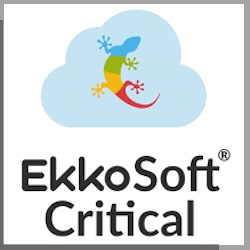Regulatory compliance has consistently been a key driver of environmental sustainability commitments. In 2025, amid global economic and geopolitical uncertainties, corporate strategies across all industries will prioritize profitability and caution. While adherence to regulations will continue as a priority for sustainability leaders, sustainability teams will need to change their focus.
Environmental sustainability efforts have always had a sneaky benefit of efficiency that in turn leads to cost savings. It’s time for this sneaky benefit to come out of the shadows and become a primary driver. This means that sustainability teams will need to not only track environmental footprint metrics but also show the money savings.
Each year, Forrester makes predictions on specific events that will be at the intersection of various trends shaping the industry. Our 2025 environmental sustainability predictions span trends on the circular economy, employee safety demands by unions, operational efficiencies, regulations on water management, and renewable energy certificates.
Here is a glimpse of three of our environmental sustainability predictions for 2025:
- Operational efficiencies and financial benefits will eclipse regulations as key drivers. Currently, 47% of environmental sustainability decision-makers cite regulatory compliance as the main reason for reporting metrics, according to Forrester’s Q2 2024 IT And Sustainability Survey. But companies advancing in their sustainability strategies, particularly those achieving operational excellence, are finding significant cost savings through improved efficiency and reduced resource consumption. The time of measurable, positive financial impact is here! Organizations should prepare by enhancing their ability to track the financial metrics of sustainability investments focused on operations.
- More than a third of Global Fortune 100 firms will commit to circular economy goals. The circular economy is becoming as significant as net-zero targets for organizations. In 2024, companies such as IKEA, Cisco, and Dell have integrated circular economy principles into their sustainability strategies. This shift is driven by new ISO standards, European regulations such as the Ecodesign for Sustainable Products Regulation (ESPR), and customer demand across various industries. Companies that go beyond compliance and embrace opportunities in reducing, reusing, repairing, refurbishing, and recycling will stand out. By 2025, implementing lifecycle assessments will help both employees and customers understand the environmental impact of their product choices.
- An industry union will demand climate adaptation protections for employees. Outdoor workers, those in hot indoor environments, and emergency responders face increased health risks due to climate change. Despite the US Occupational Safety and Health Administration’s (OSHA) Heat Illness Emphasis Program, anti-ESG backlash in the US and Europe, the Environmental Protection Agency’s authority, and laws banning heat protections have led companies to abandon adaptation efforts. While last year we predicted that employee action would drive accommodations, the acceleration of climate change and lack of corporate action will lead industry unions to advocate for climate adaptation for workers. Companies should gauge the compounding impact of climate risk on employee experience and operational resilience.
Forrester clients can read our full Predictions 2025: Environmental Sustainability report to get more detail about each of these predictions and read additional predictions. Set up a Forrester guidance session to discuss these predictions or plan out your 2025 environmental sustainability strategy.
If you aren’t yet a client, you can download our complimentary Predictions guides, which cover more of our top predictions for 2025. Get access to these guides and additional complimentary resources, including webinars, on the Predictions 2025 hub.
Author Abhijit Sunil is a senior analyst at Forrester Research. Related: Read more Forrester guest blogs here.




